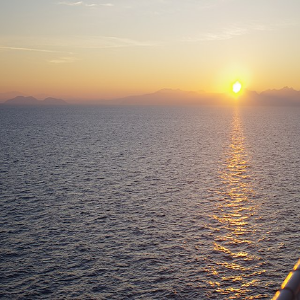Dissolved fluxes of nutrients and carbon at the sediment-water interface in the Adriatic Sea: review of early data and methods from the Italian National Research Council (CNR)

Accepted: 14 April 2023
SUPPLEMENTARY PDF: 66
HTML: 69
All claims expressed in this article are solely those of the authors and do not necessarily represent those of their affiliated organizations, or those of the publisher, the editors and the reviewers. Any product that may be evaluated in this article or claim that may be made by its manufacturer is not guaranteed or endorsed by the publisher.
Authors
We report the measurement of the Fluxes of Dissolved Compounds at the Sediment-Water Interface (DFSWIs), obtained by analyzing data collected in the Italian Exclusive Economic Zone (EEZ) of the Northern and Central Adriatic Sea from 1982. We also describe the methods, honed by Italy’s Consiglio Nazionale delle Ricerche (CNR), employed to measure and calculate DFSWIs, including benthic chambers and landers, sediment-water interface micro-profiling, on-board incubation, and pore water modeling. Data analysis demonstrated that in situ measurements are the most reliable approaches, but that on-board collected data also supply interesting results. The DFSWI data allowed to divide the Adriatic seafloor into areas with similar DFSWI types and intensities and to define the role of sediments as sources or sinks of chemicals such as nutrients, Dissolved Inorganic Carbon (DIC), and metals. DFSWIs mainly depend on dissolved and solid river inputs, Marine Organic Matter (mOM) production, and sediment reworking. They show a seasonal temperature-related trend, which in summer induces increased chemical reaction kinetics and microbial activity. DFSWIs decline from the Po River mouths southward, along the Holocene mud wedge. North of the Po River Delta, the DFSWIs are weaker and confined to the areas in front of the major river mouths, due to poor Organic Matter (OM) inputs and strong reworking of bottom sediments. The area south of the Po Delta cusp is characterized by strong DFSWIs, due to the high deposition of solid inputs from the Po River, strong primary production, and protection from the Western Adriatic Current and Bora storms; in summer, higher temperatures, and calm hydrodynamic conditions generate near-bottom hypoxic to anoxic environments in this area. In Northern and Central Adriatic offshore areas, negative DIC and phosphate fluxes are due to poorly reactive OM reaching this area and to the mainly carbonate composition and oxic environment of local bottom sediments. DFSWI data analysis highlighted the important contribution of sediments to marine carbon and nutrient cycles. This is particularly important for carbon, which plays a major role in seawater acidification and global climate change. The study also provides average DFSWI data for each diagenetic area, which allow calculating the carbon and nutrient budgets in the Adriatic Sea.
How to Cite

This work is licensed under a Creative Commons Attribution-NonCommercial 4.0 International License.
PAGEPress has chosen to apply the Creative Commons Attribution NonCommercial 4.0 International License (CC BY-NC 4.0) to all manuscripts to be published.


 https://doi.org/10.4081/aiol.2023.11094
https://doi.org/10.4081/aiol.2023.11094



